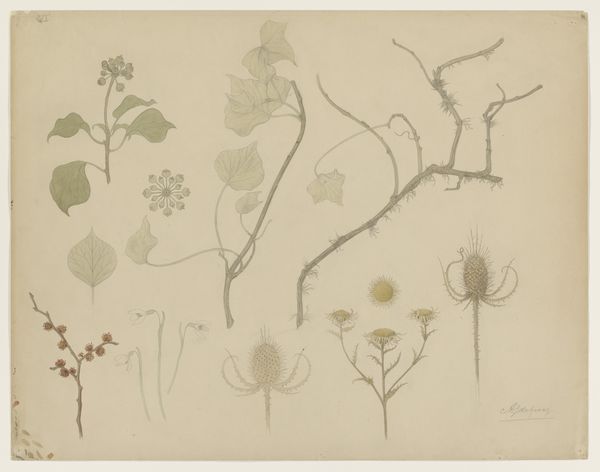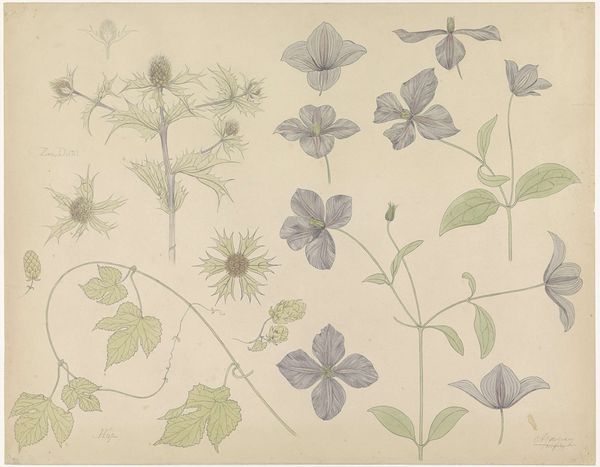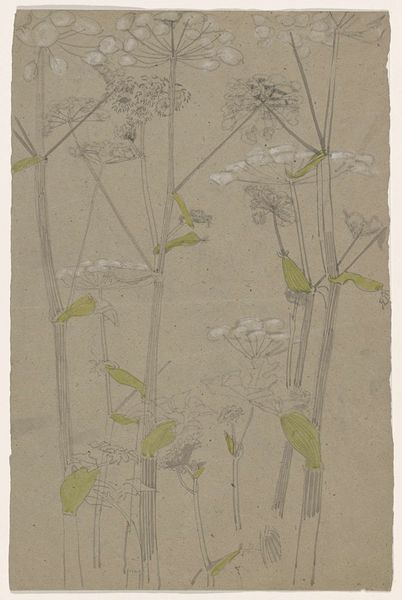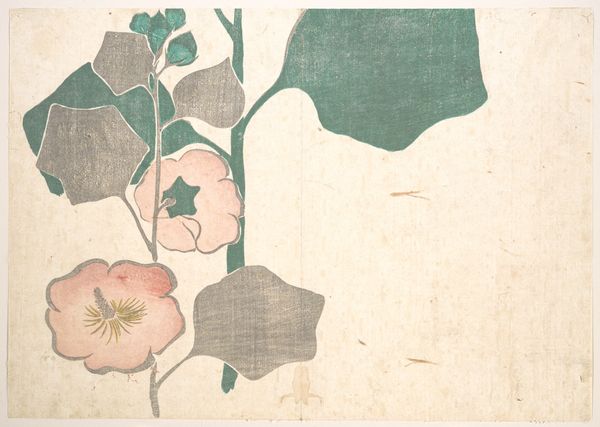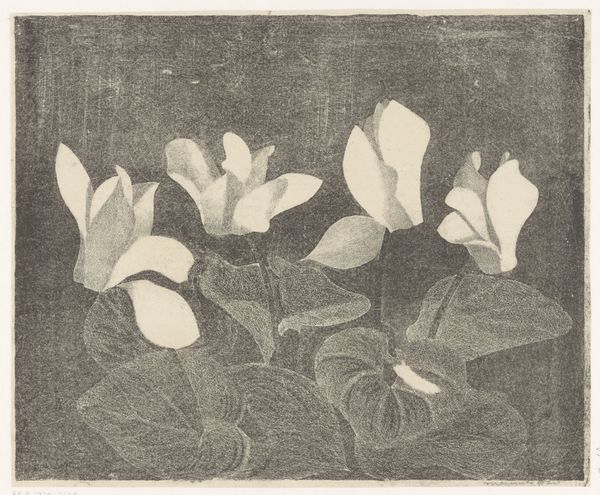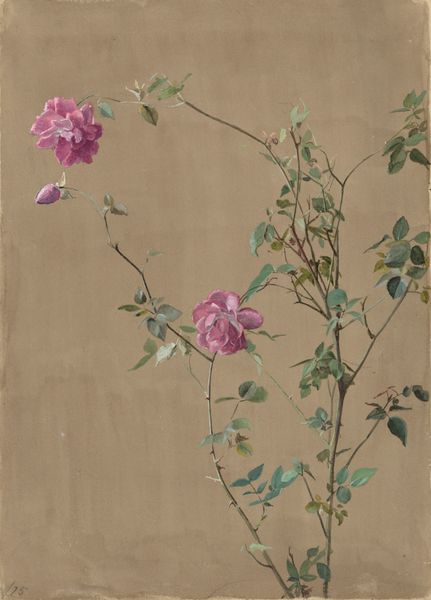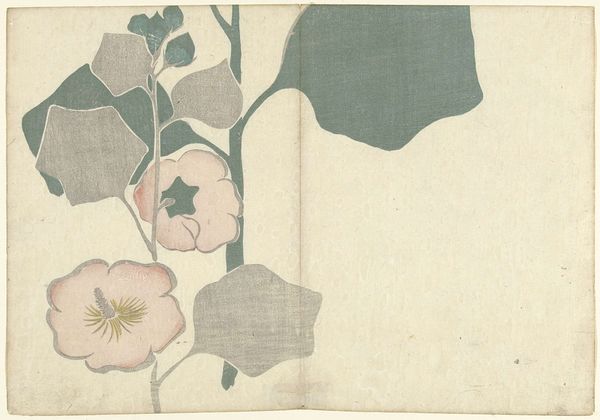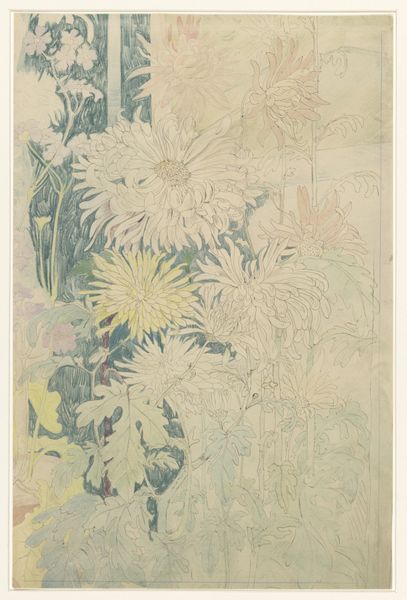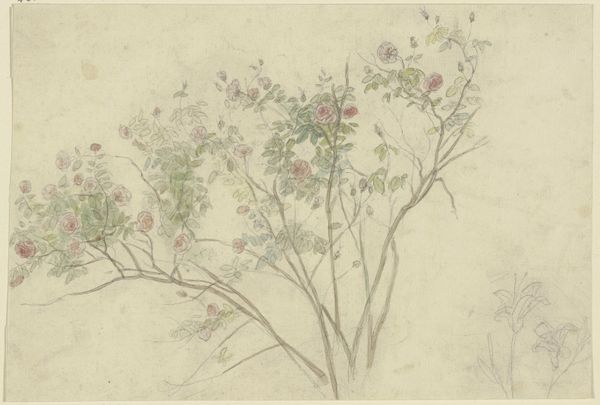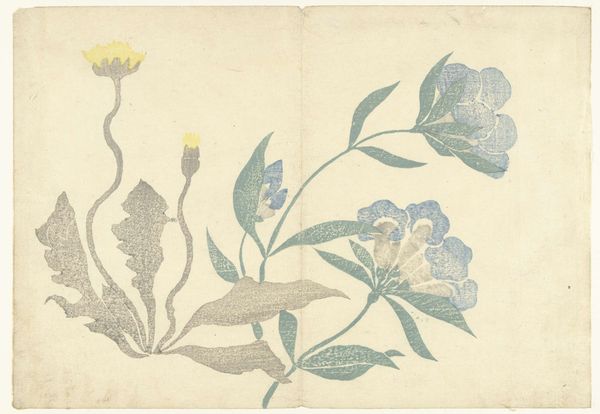
Dimensions: sheet: 9 1/4 x 13 3/8 in. (23.5 x 33.9 cm)
Copyright: Public Domain
Curator: Here we have Johann Christian August Birnbaum’s "Study of Three Flowers," a watercolor drawing dating to 1781, currently residing here at the Metropolitan Museum of Art. Editor: Mmm, melancholy botanical illustration. It’s all very muted, almost ghostly, as if pressed between the pages of some ancient herbal. Gives me a slightly forlorn feeling, which, I suppose, fits with its time. Curator: Indeed. Birnbaum, working at the tail end of the 18th century, would have been well aware of the growing interest in botany and natural history that defined the era. Remember that the documentation of flora and fauna played a critical role in colonial projects and emerging scientific discourse. Editor: Oh, I’m immediately picturing the colonial context. So it wasn’t just about pretty pictures then; it was taxonomy playing its part. Knowing it might’ve contributed to how someone cataloged nature certainly influences how it feels. I wonder how much direct exposure he had, handling live specimens? Curator: We don’t know definitively in Birnbaum’s case, though the scientific aspirations are palpable through his close observational skill. Artists were, after all, integral to disseminating accurate botanical knowledge, filling in what words alone couldn't do. There’s a visual, tangible element crucial for educational materials and references in research. Editor: Which perhaps also explains the almost detached treatment—a world away from the almost hysterical enthusiasm that explodes later on, say, with someone like van Gogh. Each blossom rendered with what feels to me like exacting coolness. Does this relate to a cultural tension between the Enlightenment versus burgeoning Romanticism in his era? Curator: Precisely. Birnbaum's technical precision aligns with the Enlightenment's emphasis on empirical observation, while the artwork's delicacy and isolated presentation resonate with nascent Romantic sensibilities which turned to the evocative potential of natural settings. How does understanding this push-pull affect how we interact with such work? Editor: Oh, profoundly. Thinking that he must have understood a changing relationship with nature that might not only be resources to utilize gives new life into what otherwise seems detached and distant. It also forces reflection on the complex intersection between aesthetic rendering and imperial knowledge, a perspective worth considering. Curator: It adds another dimension, layering meaning. It challenges our reading beyond surface-level beauty, compelling inquiry into the societal implications underscoring botanical artistry of this epoch. Editor: Precisely! Birnbaum probably did not imagine that he will provide as much intellectual and contextual fodder as beauty through this. And here we are, still unraveling what he sewed into those flower studies so carefully centuries ago.
Comments
No comments
Be the first to comment and join the conversation on the ultimate creative platform.
